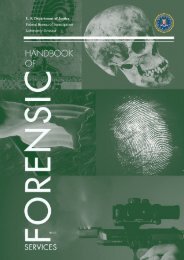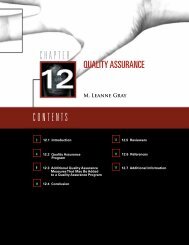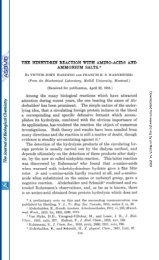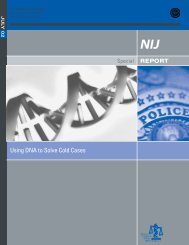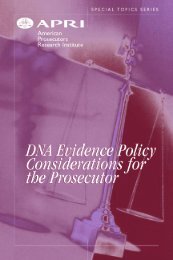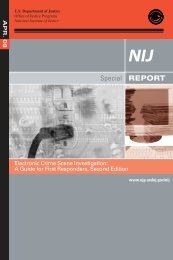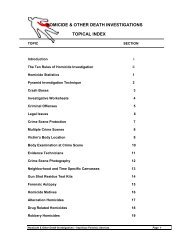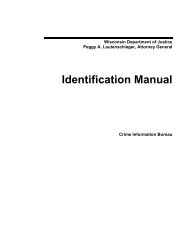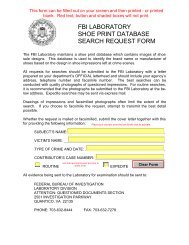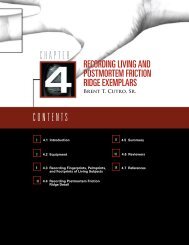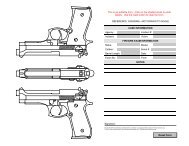Mass Fatality Incidents: A Guide for Forensic Identification
Mass Fatality Incidents: A Guide for Forensic Identification
Mass Fatality Incidents: A Guide for Forensic Identification
- No tags were found...
You also want an ePaper? Increase the reach of your titles
YUMPU automatically turns print PDFs into web optimized ePapers that Google loves.
SPECIAL REPORT / JUNE 05A. Establish and secure an intake/admitting/triage area:1. Assign escorts (one escort per bodyor set of remains).2. Assign a case number.3. Establish a case file.4. Weigh (and measure if applicable)the remains.5. Conduct triage.B. Photograph remains and personaleffects.Summary. Effective and organized workstationsat the morgue facility provide <strong>for</strong>an orderly and consistent operation andreduce the potential <strong>for</strong> error.III. Establish a <strong>Forensic</strong><strong>Identification</strong> TeamPrinciple. The medical examiner/coroner isresponsible <strong>for</strong> establishing an identificationteam of specialists from a variety of<strong>for</strong>ensic disciplines. These identificationspecialists are expected to compare antemortemto postmortem records and reporttheir findings to the medical examiner/coroner <strong>for</strong> review and final approval.Procedure. Depending on the extent ofthe incident, consider the following <strong>for</strong>ensicidentification specialists <strong>for</strong> comparingantemortem to postmortem records—A. Evidence technician.B. Fingerprint examiner.C. <strong>Forensic</strong> anthropologist.D. DNA analyst.E. Odontologist.F. <strong>Forensic</strong> photographer.G. Pathologist.H. Radiologist and radiographic technicians.I. Toxicologist.Summary. A <strong>for</strong>ensic identificationteam is an essential part of the <strong>for</strong>ensicinvestigation.IV. Other ConsiderationsPrinciple. In addition to overseeing morgueoperations, the medical examiner/coroneris expected to consider other details criticalto the efficient collection, identification,documentation, and release of remainsand personal effects.Procedure. The medical examiner/coroneris expected to consider the following—A. Use recognized, standard <strong>for</strong>ms <strong>for</strong>the collection, collation, and matchingof antemortem with postmortemrecords.Many of these sample <strong>for</strong>ms are availablethrough agencies via the Internet or onCD–ROM. Many of the agencies listed inappendix A offer electronic <strong>for</strong>ms.B. Establish and/or maintain a simple,concise, and continuous numberingsystem.C. Conduct regular team briefings:1. Consider scheduling and conductingdaily briefings <strong>for</strong> all personnelinvolved.2. Schedule briefings to cover shiftchanges, personnel transitions,duration of work, and rumor control.D. Establish morgue security by restrictingmorgue access to authorizedpersonnel.E. Prohibit personal photography.F. Monitor the physical condition andemotional well-being of those allowedto assist in the morgue operation.20




